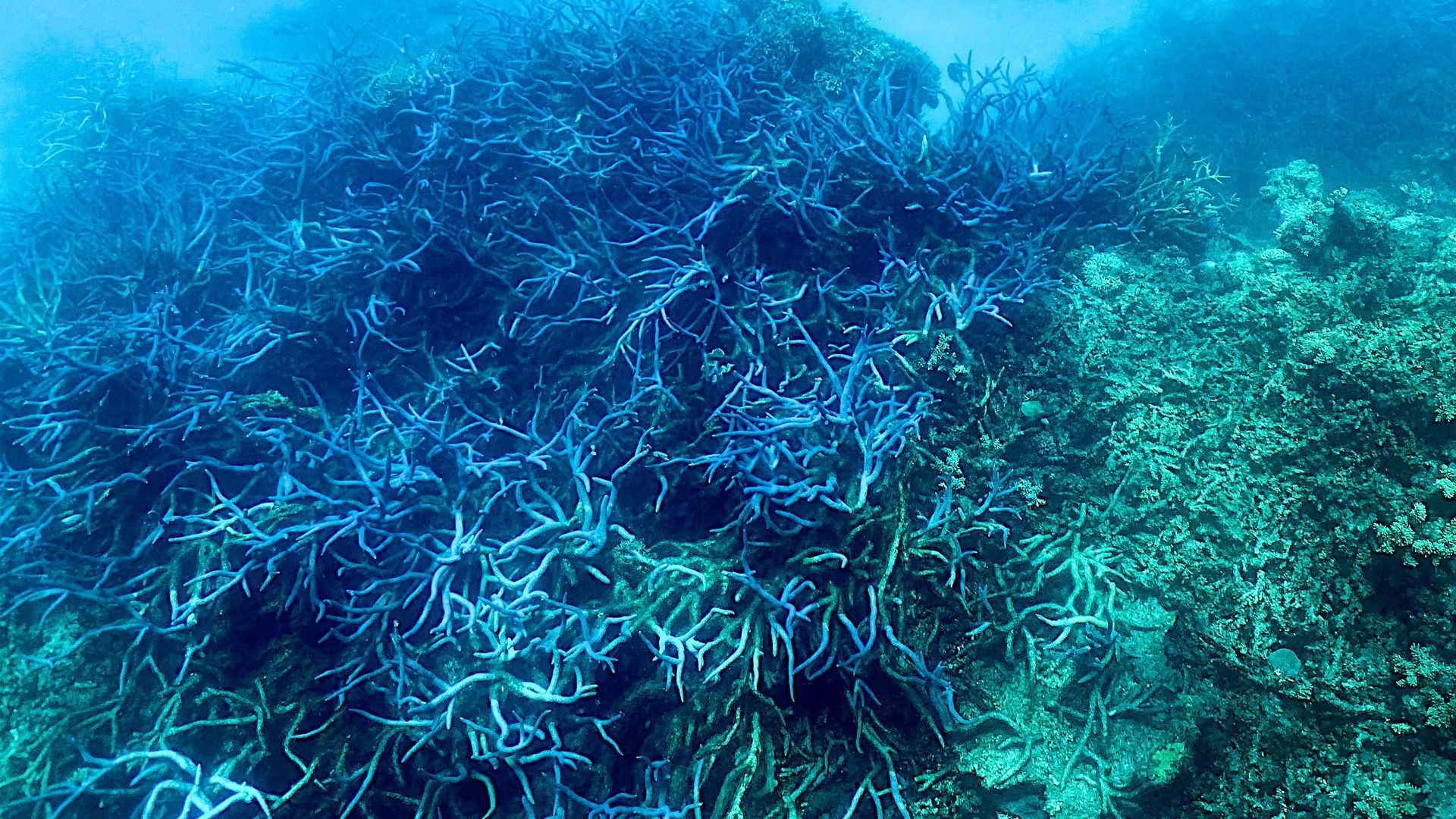
This picture shows the current condition of the coral on the Great Barrier Reef. Photo: Glenn Nichols/AFP via Getty Images
Two-thirds of the Great Barrier Reef in Australia are showing the highest amount of coral cover in nearly 36 years, the Australian Institute of Marine Science said in a new report.
The big picture: Though parts of the reef have seen some recovery, other areas are still vulnerable to climate change and mass bleaching, the government agency said. The GBR has been suffering from mass bleaching due to rising ocean temperatures.
Driving the news: A report from AIMS said the northern and central parts of the GBR saw a recovery, but the northern area has seen a loss in coral cover due to an outbreak of crown-of-thorns starfish and climate change.
Zoom in: Most of the GBR's coral reefs show "resilience through the ability to begin recovery" from disturbances, the report said.
Yes, but: According to the AIMS report, the ongoing risk of starfish outbreaks and tropical cyclones means "there is increasing concern" for the reef's "ability to maintain this state."
- Parts of the GBR "continue to be exposed to cumulative stressors," the report said.
- AIMS CEO Paul Hardisty said the loss of coral in the southern region shows the GBR is still victim to “continued acute and severe disturbances that are occurring more often and are longer-lasting," CNBC reports.
Our thought bubble via Axios' Andrew Freedman: The Great Barrier Reef remains in peril from a combination of threats, mainly warming waters due to human-caused climate change, as well as pollution.
- The bounce back in parts of the reef system shows that breaks between marine heatwaves can greatly aid the reef, but recent history shows the next such damaging event is likely in the near future.
Go deeper ... Australia passes landmark climate bill to cut emissions by 43% by 2030
